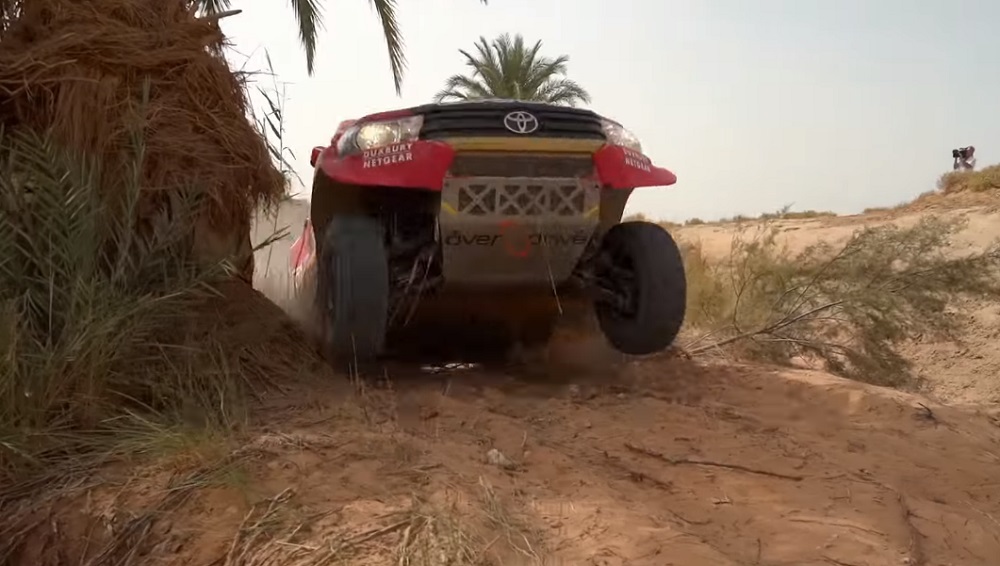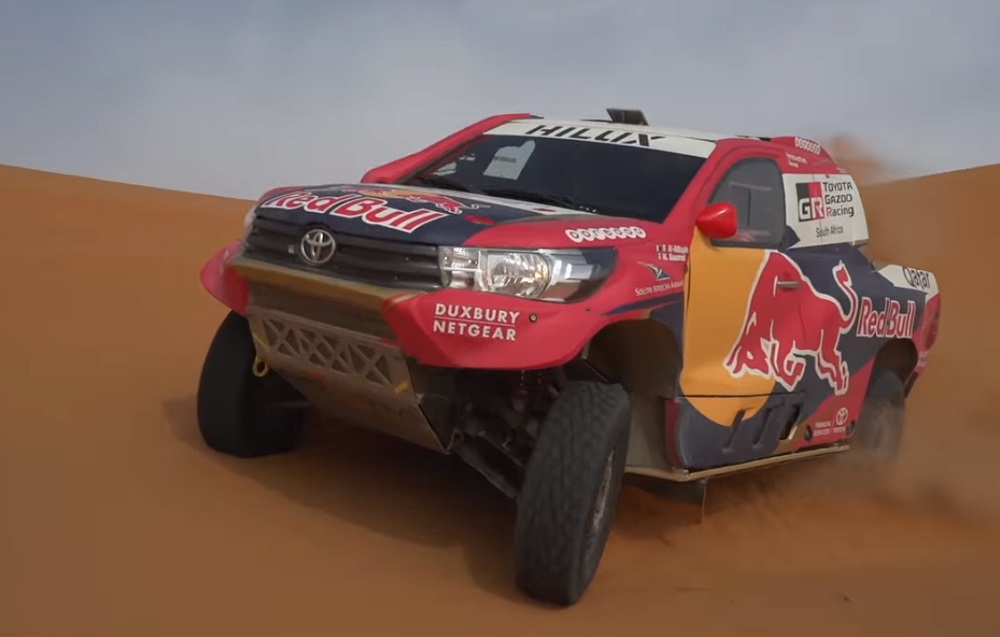Toyota Prepares for Dakar Rally 2018 with New Hilux
Veteran drivers hope to bring Toyota’s first win in the grueling off-road race with re-engineered, mid-engined, all-wheel-drive V8 truck.
No motorsport event provides even a trace of the grueling endurance torture of the Dakar Rally. The “rally raid” event covers nearly 9,000 kilometers of South America in just 14 days. Naturally, Toyota Gazoo Racing will send its Hilux into battle with the defending champion Peugeots beginning January 6, hopefully earning Toyota’s first Dakar win.

Red Bull caught up with Toyota driver Nasser Al-Attiyah during part of the trucks’ 3,000-kilometer shakedown. Al-Attiyah, a seasoned rally raid champion from Qatar, will lead that Toyota charge at Dakar. Al-Attiyah won Dakar in 2011 and 2015 respectively for Volkswagen and Mini; now he will pilot the Red Bull-sponsored Hilux for the second consecutive year.
In 2017, Al-Attiyah won the opening stage of the rally and led after Stage 2. However, an early failure forced his retirement before he could compete. The 47-year-old driver lacks nothing in experience. In addition to his two Dakar wins, Al-Attiyah has also won the last three FIA World Cup of Cross-Country Rallies championships. If any driver can take it to Peugeot’s Stephane Peterhansel and Sebastien Loeb, bet strongly on the Qatari driver.
Toyota will also field entries for Dakar veterans Giniel de Villiers (South Africa), the 2009 Dakar winner with six more podiums, and Bernhard ten Brinke (Netherlands), who won the opening stage of 2016 for Toyota. Both offer considerable support and proven alternatives for Toyota Gazoo.

2018 Toyota Hilux Evo
South Africa-based Toyota Gazoo Racing has radically altered the Hilux Evo (as it calls its Dakar entry) from its 2017 form, itself a major revision from prior Dakar entries. Last year’s truck featured two-wheel drive and a front-mounted, naturally aspirated 5.0-liter V8 borrowed from Lexus.
Related: Toyota’s 1980s Mid-Engine Off-Road Racer
This year, Toyota has moved to a mid-engine configuration with the V8 sitting between the driver and navigator. That 5.0liter powerplant will drive all four wheels. All-wheel drive will add back some of the weight that was shed, but AWD will come in handy during the early stages in the lonely Peruvian and Bolivian desert. Additionally, Toyota improved the geometry of the independent rear to include 12 percent more travel.
Here’s the full route through Peru, Bolivia, and Argentina.
